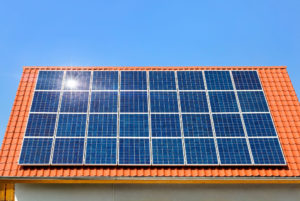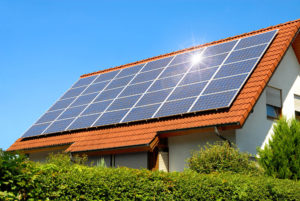Harnessing solar energy has transformed the world of energy consumption. Consider installing solar panels if you want an eco-friendly mode to power your residence.
Even if they seem to be the new kid on the block, their history goes back to the 7th century B.C. Scientist Charles Fritz created the first solar cell in the 1800s. Later, Edmund Becquerel coined the term photovoltaic effect, which boosted solar energy development.
Many more notable names emerged later, transforming the solar power generation industry into what we see today. Want to know more about the history of solar power? We have it all covered in this blog.
Contents
- 1 Key Takeaways
- 2 The Early Days
- 3 The Invention of the Solar Cell
- 4 The Modern Era – 1900s
- 5 Commercialisation of Solar Energy
- 6 Case Study: Solar Panels Network’s Approach to Leveraging Solar Technology Innovations
- 7 Expert Insights From Our Solar Panel Installers About the Invention of Solar Panels
- 8 Discover the Power of Solar with Solar Panels Network
- 9 To Wrap Up
Key Takeaways
- Solar energy utilisation dates back to ancient civilisations, with practices like using magnifying glasses and mirrors to harness sunlight for various purposes.
- The invention of the solar cell began with Horace-Benedict de Saussure’s solar oven in 1767 and progressed with Edmund Bacquerel’s discovery of the photovoltaic effect in 1839.
- The modern era saw significant advancements, including the development of the first semiconductor solar cell in 1946 and the creation of modern photovoltaic cells in 1954, leading to the widespread adoption of solar energy in spacecraft and residential properties.
The Early Days
Solar energy can be traced back to the 7th century B.C. when people used a magnifying glass to harness the sun’s power to create a fire. Ancient civilisations used this process to light a fire and cook their food. They use solar energy to keep themselves warm and protect themselves from wild animals.
Later, in the third century B.C., the Romans and the Greeks used mirrors to reflect sunlight and light their torches. They also used solar power for religious rituals and to keep enemies away.
In addition, some homes had unique windows installed that let sunlight heat their water tanks and warm the interiors.
The Chinese also started using “burning mirrors” to light up their torches for religious occasions. A story says that the Greek Navy used a huge bronze shield to reflect the sunlight and burn their enemy’s ship!
So, solar power and the utilisation of sunrays were becoming news, and more people wanted to look at it.
The Invention of the Solar Cell
In 1767, a Swiss scientist, Horace-Benedict de Saussure laid the foundation for solar cell development. He developed a solar oven, an insulated box with three layers of glass for magnifying sunrays.
This solar oven could reach a temperature of 110 °C, capture the thermal radiation and use it for heating. The world was amazed by this astonishing invention, but they weren’t prepared for the upcoming developments.
1839, French scientist Edmund Becquerel discovered the photovoltaic effect, the working theory behind modern solar panels. He figured this out while working with an electrolytic cell and two metal electrodes.
Edmund observed that the cell produced more energy when exposed to sunlight. Later on, in 1873, Willoughby Smith discovered that selenium could be used as an efficient conductor. Suddenly, everyone was looking into solar energy!

Further developments
Right after Smith’s discovery, Richard Evans Day and William Grylls Adams decided to apply the photovoltaic theory to selenium. They discovered a photovoltaic effect when they lit up a junction between platinum and selenium, which produced electricity.
A few years after this discovery, American scientist Charles Fritts developed the world’s first solar cell using selenium wafers in 1883. This development can be considered the foundation for modern solar cell engineering.
Some notable events during this period –
- In 1888, Russian physicist Aleksandr Stoletov used the Photoelectric effect and devised a photoelectric cell.
- In 1891, the first solar heater was developed.
- Albert Einstein published a paper on the photoelectric effect and made solar energy known across the globe.
The Modern Era – 1900s
Albert Einstein’s paper on the photoelectric effect in 1905 took solar energy to another level. Inspired by him, William J. Bailey manufactured a copper collector that improved the efficiency of the additional collector device in 1908.
Subsequently, in 1946, Russell Ohl developed the first semiconductor solar cell, a massive landmark in solar history.
By the 1950s, global warming had become famous, and people were getting worried. The possible depletion of fossil fuels gave rise to the requirement for a renewable energy source.
Thus, in 1954, leading scientists Calvin Fuller, Daryl Chaplin, and Gerald Pearson at Bell Laboratories developed the modern photovoltaic cell. The U.S. Signal Corps Laboratories installed these cells in satellites orbiting the earth.
Slowly, solar energy started becoming popular and getting included in various spacecraft.
- In 1958, satellites Vanguard I, Vanguard II, Sputnik-3 and Explorer III implemented solar panels.
- NASA developed a satellite called Nimbus, which ran on a solar panel array.
Both these events were highly significant and paved the way for future solar power development.
The late 1900s
In the late 1900s, particularly in 1970, the USA suffered a shortage of energy resources. The economy was also unstable, and some form of innovation was the need of the hour.
So, U.S. President Jimmy Carter decided to install solar panels on the White House’s roof. This was a move to spread awareness about solar energy and steer more people towards using clean energy.
People started realising the benefits of using a cleaner energy source but were unsure about the expenses. They also wanted to buy something highly efficient. Bell Labs’ solar sales offered 4% of efficiency, which later increased to 11%. This allowed users to power their electronic gadgets for many hours.
Things took a sharp turn in 1959 when Hoffman Electronics introduced solar panels with 10% efficiency, which increased to 14% in the next year. It made solar energy even more popular among households and space programs.
Significant developments during the late 1900s include –
- The U.S. Department of Energy established a project called Solar One, where 10mW of electricity was produced, which rapidly spiked the sales of solar panels and solar energy consumption in 1985.
- In 1986, ARCO launched the first commercial solar module.
- Then, in 1994, the National Renewable Energy Lab in the U.S. developed a powerful solar cell.
Solar energy started being utilised in corporate and residential properties. Implementing solar farms and using solar panels in cars were also getting popular.

Commercialisation of Solar Energy
From the early 2000s, solar panels started becoming available for everyone. Till 2010, more energy capacity has been added every year, which is higher than any other sector.
Subsequently, the E.U. established mandatory renewable energy production targets to protect the environment.
Can you see how far solar energy has come since its invention?
Today, solar installations have become popular worldwide across offices and residences. The U.K. observed more than 1 million solar panel installations and purchases within six years.
Currently, buying and installing solar panels have become more affordable than before. That’s why, in 2019, the U.K. Government shut down the Feed-in Tariff system. In addition to this, developing solar plants have also become convenient and popular.
The British government has increased the VAT on solar installations from 5% to 20% to maintain the E.U. rules.
The U.K. is the third-highest solar power generating country in the E.U.
Case Study: Solar Panels Network’s Approach to Leveraging Solar Technology Innovations
Background
At Solar Panels Network, we pride ourselves on staying at the forefront of solar technology. We are committed to adopting and promoting innovations in solar energy, rooted in a rich history of technological advancements. Our mission is to make solar energy accessible and reliable for all, drawing inspiration from the pioneers who invented and developed the solar panels we use today.
Project Overview
In this case study, we detail our approach to leveraging the latest innovations in solar technology to benefit our clients. We focus on providing cutting-edge solutions that not only reflect the historical advancements in solar energy but also push the boundaries of what is possible. Our goal is to maximise efficiency and sustainability for residential and commercial installations.
Implementation
- Adoption of Latest Technologies: We utilise state-of-the-art photovoltaic cells, including monocrystalline and polycrystalline panels, known for their high efficiency and reliability. We also explore thin-film technologies where applicable.
- Training and Development: Our team undergoes continuous training to stay updated with the latest advancements in solar technology. This includes understanding historical developments and new materials like perovskite and bifacial solar cells.
- Customised Solutions: We offer tailored solutions based on our clients’ specific needs, whether they require high-efficiency systems for large-scale commercial use or cost-effective options for residential installations.
- Sustainable Practices: We are committed to sustainability, ensuring that our installations are not only efficient but also environmentally friendly. This includes using recyclable materials and adopting best practices for solar panel disposal and recycling.
Results
- Enhanced Efficiency: By integrating the latest technological advancements, our installations consistently achieve high energy output, providing significant savings on electricity bills for our clients.
- Customer Satisfaction: Our customised approach ensures that each client receives a solution that meets their unique needs, resulting in high levels of customer satisfaction and repeat business.
- Sustainable Impact: Our commitment to sustainable practices has not only reduced our carbon footprint but also set a standard for responsible solar energy installation and maintenance.
Summary
The history of solar panels is a rich tapestry of innovation and perseverance. At Solar Panels Network, we honour this legacy by continually adopting new technologies and sustainable practices. Our approach ensures that our clients benefit from the best the industry has to offer, both in terms of efficiency and environmental responsibility. As we look to the future, we are inspired by the pioneers of solar energy and committed to leading the way in the renewable energy sector.
Expert Insights From Our Solar Panel Installers About the Invention of Solar Panels
The journey from the early solar cells to today’s advanced photovoltaic systems is a testament to the relentless innovation in the field of renewable energy. Each advancement has brought us closer to making solar energy more accessible and efficient.
Lead Solar Engineer
Understanding the history of solar panels helps us appreciate the technology’s evolution and the dedication of pioneers like Charles Fritts and Bell Labs. It’s inspiring to see how far we’ve come from the first selenium cells to modern high-efficiency panels.
Renewable Energy Consultant
Knowing the origins of solar technology allows us to better educate our customers on the benefits and reliability of solar energy. It also helps in debunking myths about its effectiveness and longevity.
Senior Installation Technician
Discover the Power of Solar with Solar Panels Network
Are you navigating the world of solar installations? Look no further than Solar Panels Network, the U.K.’s trusted partner in harnessing the sun’s potential. Our dedication goes beyond just installations; we’re on a mission to transform how homeowners and businesses across the U.K. perceive and utilise energy. By choosing us, you’re reducing your carbon footprint and making a smart financial move that promises savings for years ahead. Contact us today and embark on your solar journey.
To Wrap Up
There have been many changes in the solar power industry since its invention. Earlier, it was a luxury for only selected users, but it is now affordable and accessible for everyone. Its applications are endless, from solar batteries in watches to panels in homes and smart cars.
As the world moves towards cleaner energy sources, you can consider solar power the need of the hour. So, if you have the option and the accommodation, opt for a solar panel to power your home.
About the Author
Solar Panels Network stands at the forefront of solar energy solutions, driven by a team of seasoned solar engineers and energy consultants. With over decades of experience in delivering high-quality solar installations and maintenance, we are committed to promoting sustainable energy through customer-centric, tailored solutions. Our articles reflect this commitment, crafted collaboratively by experts to provide accurate, up-to-date insights into solar technology, ensuring our readers are well-informed and empowered in their solar energy decisions.

